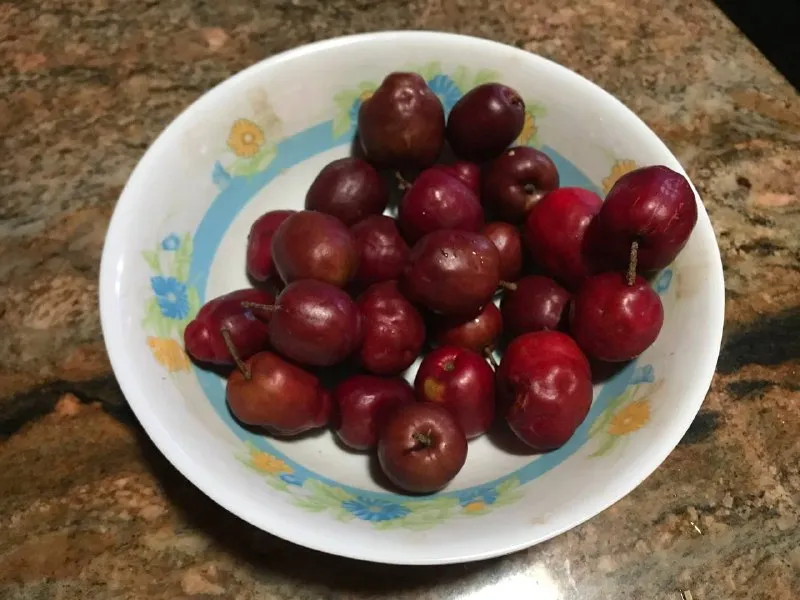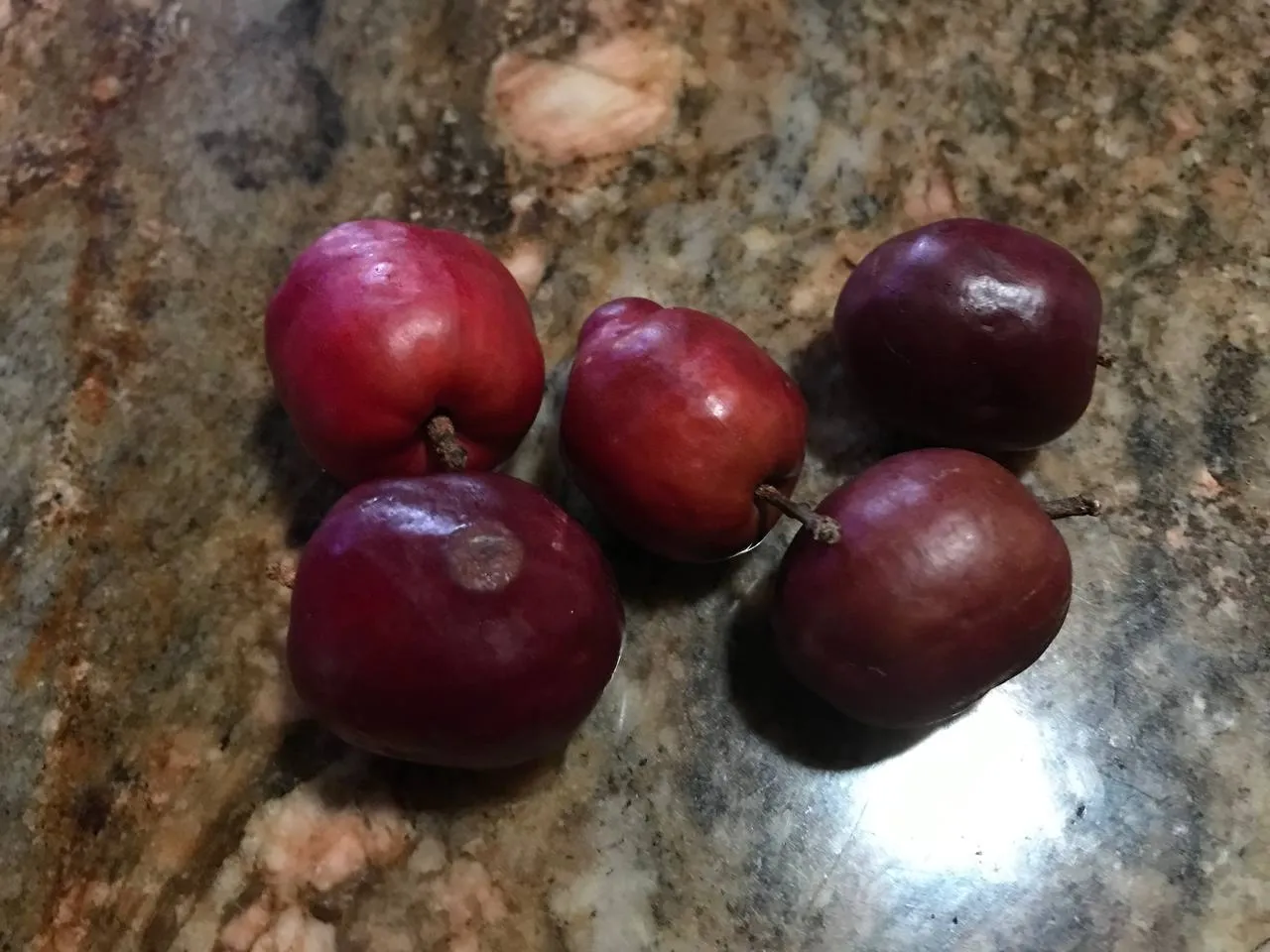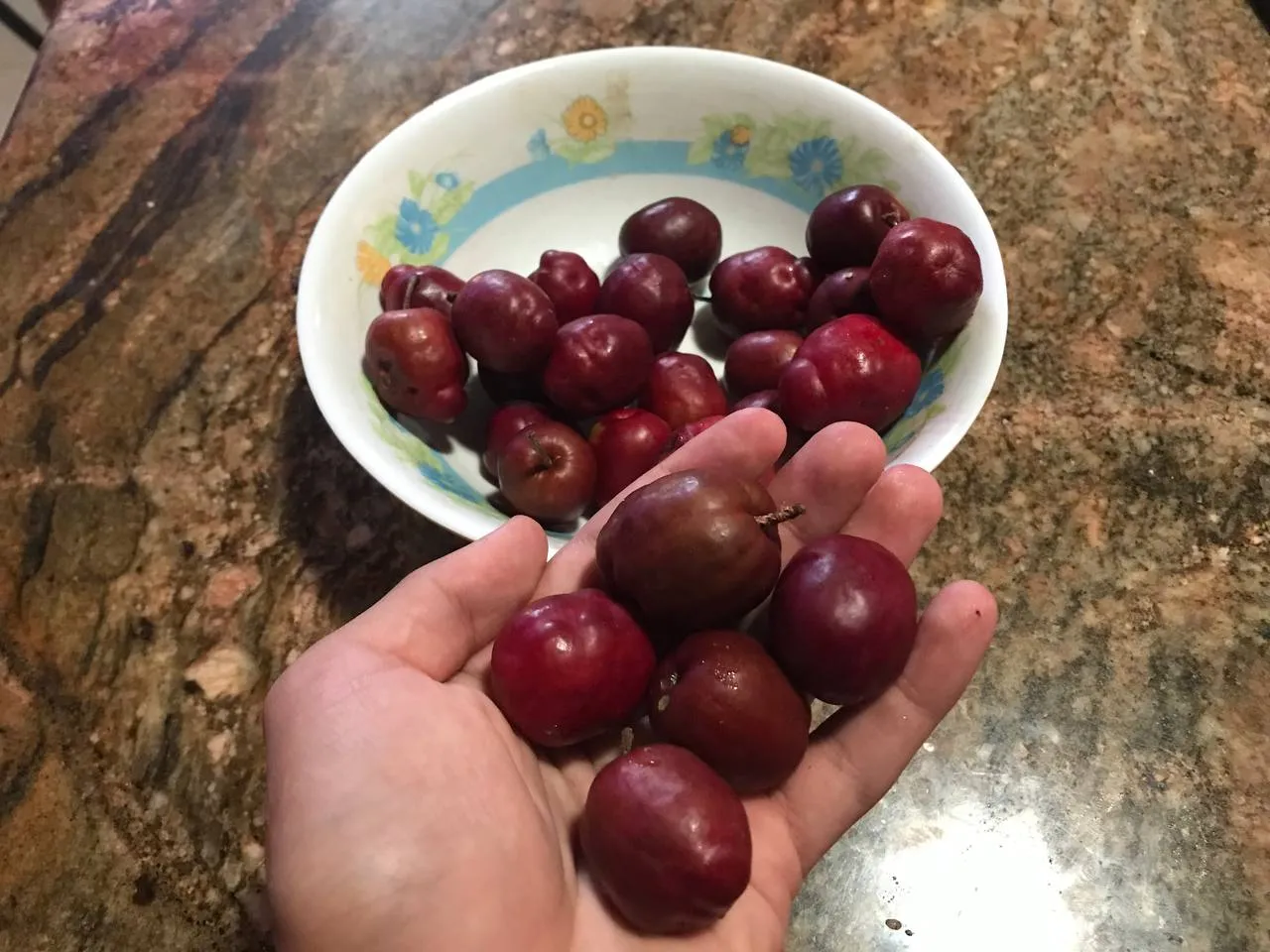Durante los meses de Abril y Mayo en nuestro país ocurre una especie de primavera tropical. Los árboles de zonas semi áridas o de temperaturas calientes del oriente de Venezuela nos regalan la oportunidad de saborear una gran variedad de frutas. No solo las flores nos engalanan con su belleza, sino que nos deleitamos con una gran cantidad de frutas criollas. Una de las más características es la ciruela criolla.
Esta es una fruta que al comerla me lleva a evocar gratos recuerdos de mi infancia. Recuerdo que en la temporada de ciruela los fines de semana salíamos en familia en un viaje para poder comprarlas. Por aquellos tiempos, ir a visitar los pueblos aledaños a la ciudad de Maturín era todo un viaje. Las zonas donde se cultivaba la mejor ciruela de huesito, como también se le conoce, era la zona oeste. Los caseríos de la candelaria, el corozo y el furrial en esta época se llenaban de ventas de esta deliciosa fruta.

El viajar los 20 0 30 kilómetros que separan a la ciudad de estos caseríos era toda una excursión. Nos levantabamos, desayunábamos, íbamos al mercado municipal y luego cogíamos carretera hasta la mencionada zona. Al llegar se podía observar las ciruelas colocadas en cestas, tazas o potes de aceites de carro. Quizás las nuevas generaciones que están aquí en hive desconozcan que el aceite para el motor de los vehículos venía en latas de metal que luego tenían distintos usos populares, ya que podían contener hasta un kilo de productos o un litro de kerosone.
La técnica para comprar las mejores ciruelas era ir viendo todos los puestos de venta hasta llegar al furrial. Estos puestos de venta por lo general eran mesas colocadas frente a las casas de los vecinos. Recuerdo que al comprar dos potes de ciruela siempre regalaban la ñapa que eran las ciruelas más maduras. Estas eran recogidas de las matas sembradas en los patios de las casas de esta zona.

Con el transcurrir del tiempo surgió una siembra hacia la vía de Guanaguana en el municipio piar, por cierto aún existe, siendo la primera siembra formal que conocí de esta fruta. Este agricultor se dedicó a la siembra de ciruela aplicando todas las técnicas y labores culturales de un cultivo moderno. Era una siembra planificada, con los árboles sembrados con una buena distancia entre ellos, con un sistema de riego y con la aplicación de abono químico y con el respectivo control de plagas.
Esto hizo que la calidad de la ciruela criolla o de huesito del Municipio Piar fuera superior a la del oeste de Maturín. Además, por tener riego permanente en esta zona, la cosecha comienza primero que en otras partes, lo cual favorece a los consumidores porque se deleitan de esta sabrosa fruta con mayor anticipación.

Ahora cada vez que compramos un kilo a un carretillero en nuestra ciudad, les cuento mis hijos como era la excursión familiar a la que nos llevaba su abuelo, hace unos 45 años atrás, para ir a comprar esta deliciosa fruta.
During the months of April and May in our country a kind of tropical spring occurs. The trees of the semi-arid or hot temperature zones of eastern Venezuela give us the opportunity to taste a great variety of fruits. Not only the flowers adorn us with their beauty, but we are also delighted with a great quantity of local fruits. One of the most characteristic is the Creole plum.
This is a fruit that when I eat it brings back fond memories of my childhood. I remember that during the plum season, on weekends we would go out as a family on a trip to buy them. In those days, going to visit the towns surrounding the city of Maturin was quite a trip. The areas where the best plums were grown were in the west. The villages of La Candelaria, El Corozo and El Furrial were full of sales of this delicious fruit.

Traveling the 20 or 30 kilometers that separate the city from these villages was quite an excursion. We would get up, have breakfast, go to the municipal market and then take the road to the aforementioned area. When we arrived we could see the plums placed in baskets, cups or pots of cart oils. Perhaps the new generations that are here in hive do not know that the oil for the engine of the vehicles came in metal cans that later had different popular uses, since they could contain up to a kilo of products or a liter of kerosone.
The technique to buy the best plums was to go looking at all the stalls until arriving at the furrial. These stalls were usually tables set up in front of the neighbors' houses. I remember that when buying two pots of plums they always gave away the ñapa, which were the ripest plums. These were picked from the bushes planted in the backyards of the houses in this area.

With the passing of time there was a planting towards the road to Guanaguana in the municipality of Piar, by the way, it still exists, being the first formal planting I knew of this fruit. This farmer was dedicated to the planting of plums applying all the techniques and cultural labors of a modern crop. It was a planned planting, with the trees planted with a good distance between them, with an irrigation system and with the application of chemical fertilizer and the respective pest control.
This made the quality of the Criollo plum of the Municipality of Piar superior to that of the west of Maturín. In addition, because we have permanent irrigation in this area, the harvest begins earlier than in other parts, which favors consumers because they enjoy this tasty fruit earlier.

Now, every time we buy a kilo from a cart driver in our city, I tell my children about the family excursion their grandfather used to take us on, some 45 years ago, to buy this delicious fruit.

